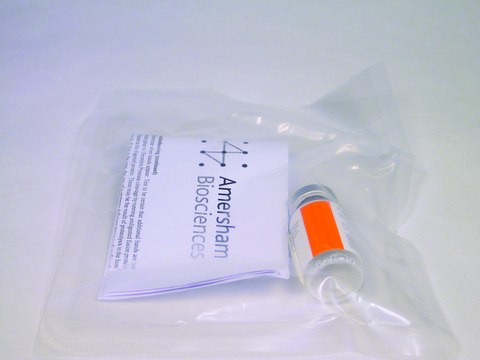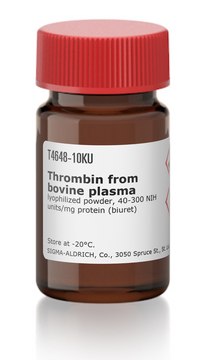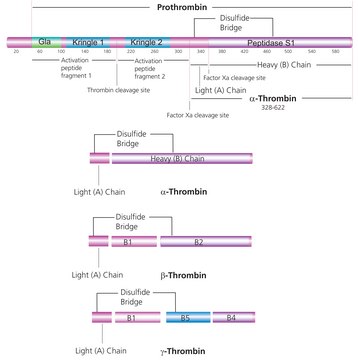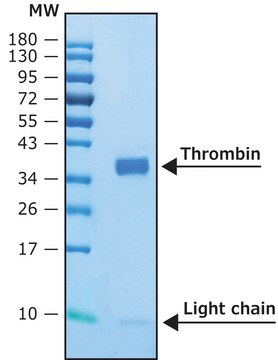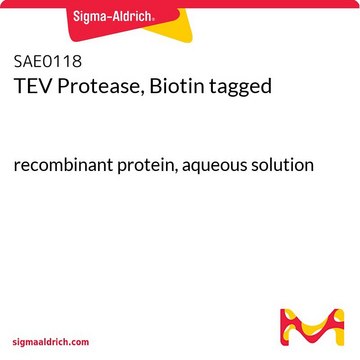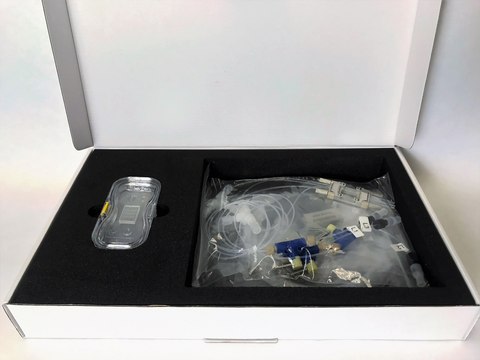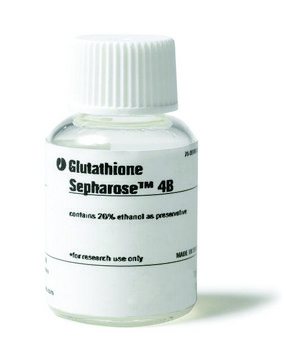SAE0147
Thrombin protease, biotin-tagged
human recombinant,expressed in HEK 293 cells, ≥5000 units/mL
Synonym(s):
Factor IIa, fibrinogenase, thrombase
About This Item
Recommended Products
biological source
human
recombinant
expressed in HEK 293 cells
concentration
≥5000 units/mL
technique(s)
protein extraction: suitable
suitability
suitable for additive or modifier in the separation of proteins or peptides
application(s)
life science and biopharma
shipped in
dry ice
storage temp.
−20°C
General description
The optimal cleavage sites for thrombin are as follows:
1. A-B-Pro-Arg-||-X-Y, where A and B are hydrophobic amino acids, and X and Y are nonacidic amino acids.
2. Gly-Arg-||-Gly
Recombinant human thrombin protease is expressed in human HEK 293 cells as a glycoprotein heterodimer. The DTT-reduced protein migrates as two bands of ∼31 kDa (heavy chain) and ∼6 kDa (light chain) on SDS-PAGE. This protein is manufactured in human cells, with no serum. The human cells expression system allows human-like glycosylation and folding, and often supports higher activity of the protein.
This thrombin protease is useful for cleaving recombinant proteins that are expressed as fusion proteins with this sequence between the carrier domain and the protein of interest.
Application
This method is advantageous over post-elution cleavage for several reasons:
- It eliminates most impurities normally associated with purification on Ni-chelating columns.
- It allows gentler elution conditions, with added flexibility in the elution buffer composition. This can mitigate protein aggregation and inactivation.
Features and Benefits
Catalytic pH range:11.5–10
Optimal pH:11-8.3
(Note: thrombin precipitates at pH ≤5)
Molecular mass:4,12 37.4 kDa
Human isozymes pI range:6.35–7.6
E280 (1%):12 -18.3
Storage Class Code
10 - Combustible liquids
WGK
WGK 1
Regulatory Information
Choose from one of the most recent versions:
Certificates of Analysis (COA)
Don't see the Right Version?
If you require a particular version, you can look up a specific certificate by the Lot or Batch number.
Already Own This Product?
Find documentation for the products that you have recently purchased in the Document Library.
Articles
Proteases for biotinylated tag removal for protein purification workflows with related reagents and technical resources.
Our team of scientists has experience in all areas of research including Life Science, Material Science, Chemical Synthesis, Chromatography, Analytical and many others.
Contact Technical Service